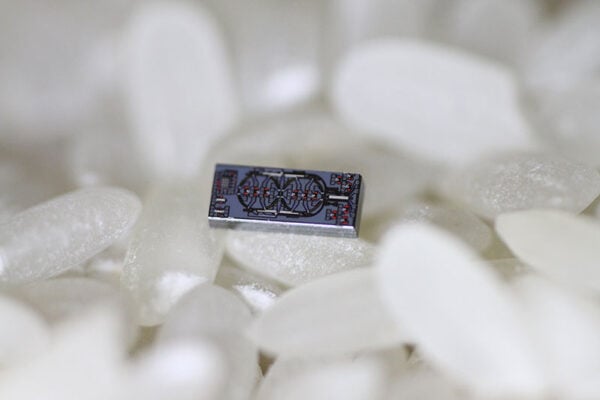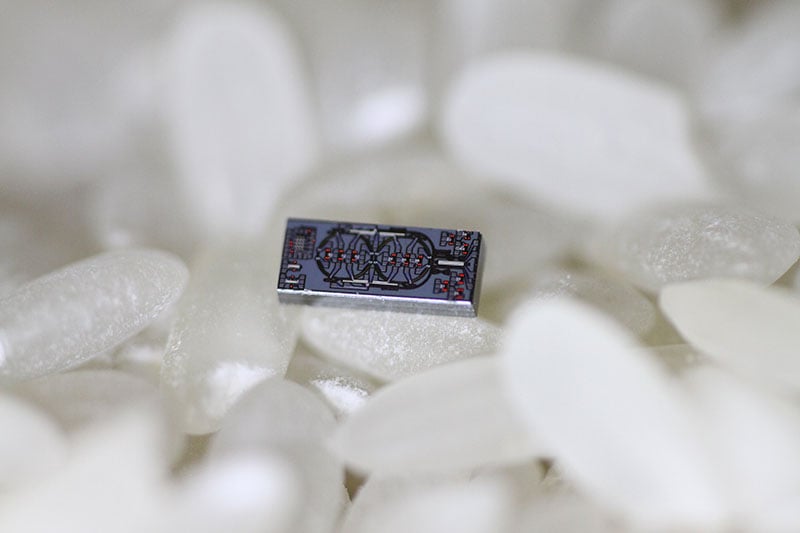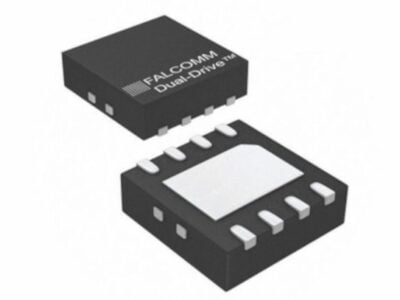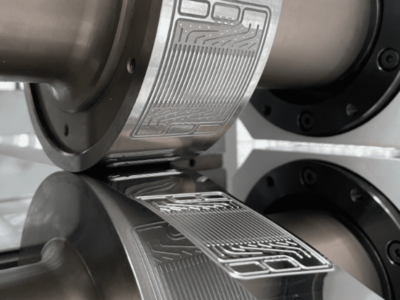
Silicon-based electro-optical gyroscope overcomes SNR deficiencies
The mechanical spinning-wheel and laser-based optical gyro have been supplanted in most applications by fiber-optic and MEMS gyros, but the latter pair have difficulties reaching the precision performance of the former. Attempts to miniaturize the fiber gyro have fallen short due to second- and third-order errors that result from thermal fluctuations, component drift, and fabrication mismatch brought on signal-to-noise ratio (SNR) degradation as size and optical-path length shrinks.
Engineers know that intrinsic errors in systems can be reduced by using techniques such as upfront or ongoing calibration. They minimize the sources of the errors through ever-better components and materials, and—perhaps the best technique where feasible—devise an architecture that causes the errors to self-cancel. Applying that last principle, a team at Caltech funded by the Rothenberg Innovation Initiative has devised, built, and tested a new approach to tiny, silicon-based electro-optical gyros that provides precision performance with little cost or other negatives (see figure 1).

Their solution leverages what they denote as the “reciprocity” of passive optical networks to greatly reduce thermal fluctuations and mismatch, and thus yield superior results compared to previous approaches. Their demonstration device is capable of detecting phase shifts—a primary figure of merit for these units—that are 30 times smaller than state-of-the-art, miniature fiber-optic gyroscopes, even though the unit itself is 500 times smaller. The overall improvement in performance of optical gyroscopes is one to two orders of magnitude.
As published in Nature, their paper “Nanophotonic optical gyroscope with reciprocal sensitivity enhancement” explains the approach, which is somewhat analogous to using differential signals to cancel common-mode electrical signals. As with all optical gyros, their device uses the relativistic Sagnac effect to determine angular velocity, by measuring the relative phase-shifting between two counter-rotating optical waves (one as a reference path, the other as signal path) created via a beam splitter from a single source. These are then recombined after their transit. When the reference frame of the gyroscope is rotating, the effective path lengths as seen by the two beams change, and thus fringing occurs between the light beams at the receiving-end sensors.
Overall performance is normally closely linked to the path length, with a longer path offering greater precision and less sensitivity to dynamic differences between the two paths. Miniaturizing the path by using a waveguide in a silicon substrate rather than lengths of optical fibers or a vacuum path means increased sensitivity to any path-related changes.
To work around this issue, the Caltech team set used a design that continually alternates the optical paths (see figure 2) at a rate much higher than any fluctuations. The “polarity” of the signals that travel through the silicon’s optical waveguides is reversed, while undesirable common-mode components such as thermal-based fluctuations and mismatch, are attenuated. In this context, “reciprocal” means that both beams of light within the gyroscope optical waveguides are affected in the same way by imperfections.

The overall design uses a significant amount of electronics, of course, including a pair of channels comprised of photodiodes, transimpedance amplifiers (TIAs), and variable gain amplifiers (VGAs), plus low-pass filtering and demodulation (see figure 3).

The all-integrated optical gyroscope device fabricated by the researchers, headed by Ali Hajimiri, Bren Professor of Electrical Engineering and Medical Engineering in the Division of Engineering and Applied Science at Caltech, measures just 2×2mm. The team maintains that their reciprocal sensitivity approach has greater benefits and much lower complexity than alternatives such as using a non-coherent light source, or employing a low-loss waveguide (which usually requires different, harder-to-fabricate optical-waveguide core and clad materials). Further, it enables the detection of the smallest recorded phase-shift (just 3 nanoradians) of all miniaturized approaches implemented in silicon nanophotonics thus far.
This article first appeared on Electronic Design – www.electronicdesign.com
 If you enjoyed this article, you will like the following ones: don't miss them by subscribing to :
eeNews on Google News
If you enjoyed this article, you will like the following ones: don't miss them by subscribing to :
eeNews on Google News




